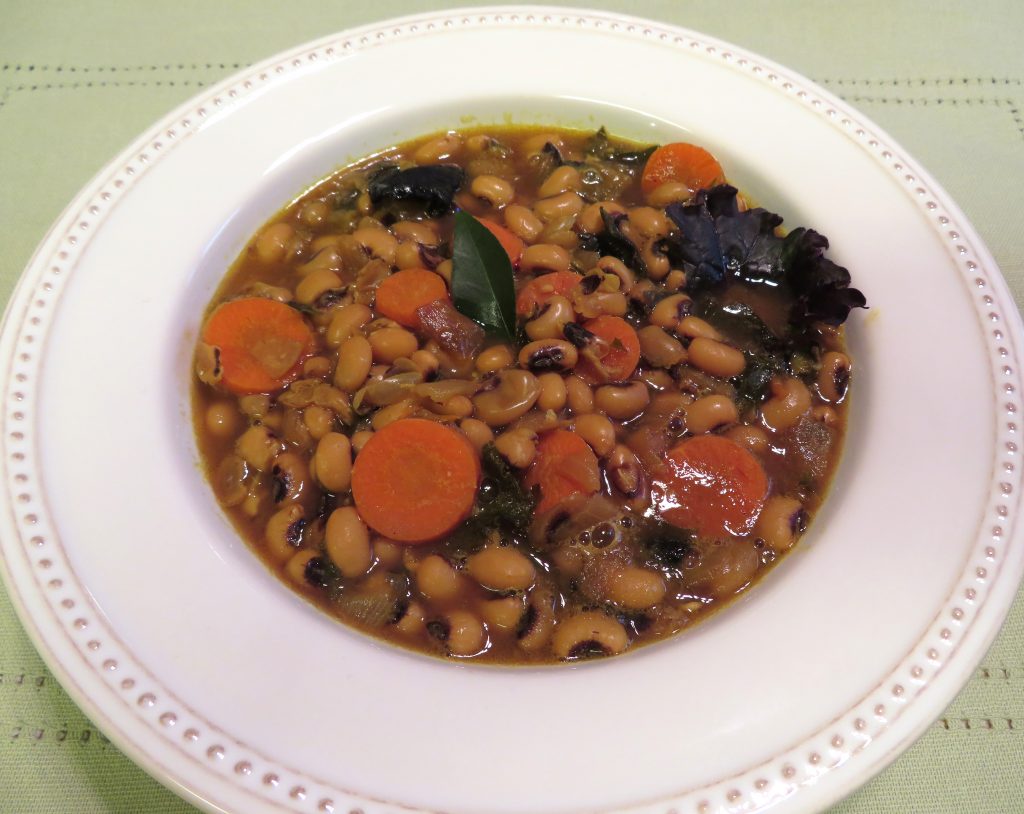Some Much-Needed Luck for 2021

Today I offer you a different twist on a must-have traditional dish for January 1: Curried Black-Eyed Peas. In the Southern United States, to eat black-eyed peas with greens on New Year’s Day is considered a culinary talisman to bring good luck and good fortune in the coming year. Sadly, the dish is thought to have been brought to the US from West Africa through the slave trade, but it survives today as a symbol of hoped-for fortune and abundance to come—and because it’s delicious.
Although my previous black-eyed pea recipes reflect Southern cooking, I decided to add a new twist to this celebratory dish and offer you a version that reflects traditional Ayurvedic cooking through a mélange of spices. You can decide whether the dish packs a hot punch or is simply flavorful with the artful use of spices.
Curried Black-Eyed Peas can be enjoyed as a soup or stew or—using less liquid—as a savory side dish. Try this dish with your favorite greens. Swiss chard, spinach, and kale cook in about 10 minutes. Collards are divine if you have an additional 30 to 40 minutes to let them cook until they get tender. Serve this over basmati rice for a one-dish meal, curried “hoppin’ john”!
I will venture to say that the year 2020 is one that most of us will be glad to see in our rear-view mirrors, even knowing we must remain vigilant to stay well in 2021. On the cusp of the new year, I wish you and your loved ones good luck and an abundance of grace as this next year unfolds for you.
PS Looking for some other black-eyed pea recipes? Try this marvelous soup with winter squash or a black-eyed pea salad.
Print



